Following the Heart: Warp and Weft, a Tapestry
This is the second installment of the author’s “Following the Heart” series, which details her journeys inspired by an encounter with Dom Bede Griffiths, the English Benedictine monk from Prinknash Abbey in Gloucestershire who established a Hindu-Catholic ashram in India. Shortly before his death Father Bede requested Nigelle continue his research into the Black Madonna of medieval France. She spent many months in monasteries and convents throughout France honouring this request. In this article, she describes the magnificent Aubusson tapestries by Dom Robert, the Benedictine monk. Read the first installment of the “Following the Heart” series here.
It was March 2016 before I was able to travel to Sorèze. I met with Abbot Francis on December 17th; a significant date; the anniversary of Father Bede Griffiths’ birthday. He had travelled to India from the Benedictine community of Prinknash Abbey where he had lived as a monk for many decades. Father Francis and I drank to our shared memories and to the legacy of interfaith dialogue that Bede had bequeathed to the world; a better place for his presence in it. Tea never tasted so good.
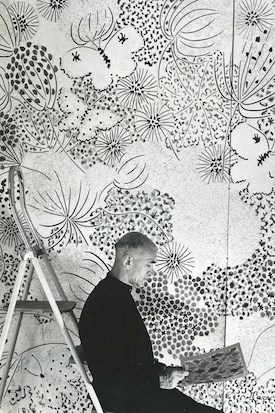
Dom Robert Ombelles – cartoon for his final unfinished work
I had trails to follow – Father Francis gave me another surprise. Dom Robert, he said, had spent ten years at Buckfast Abbey in Devon! His tapestries were famous, too famous for a monk dedicated to poverty. His tapestries, Aubusson woven, commanded huge prices. They were huge tapestries too. His decade in Buckfast came as the result of the increasing frisson of opposing realities – the famous artist whose company was demanded by the Parisian art set and the humility, surrender and simplicity of his professed Calling. His Abbot encouraged him to leave his beloved Abbaye d’En Calcat in Dourgne and eventually, after a passerine moment in the monastery of Kerbeneat in Finistère, Dom Robert went on to join the Benedictine community at Buckfast where he remained for ten years until a new abbot was appointed at Abbaye d’En Calcat and a compromise, an understanding, was reached.
The Benedictine life is a balanced life of prayer and work and sung offices. That is the purity of their day, a day set by the Rule of St Benedict in the sixth century. Dom Robert’s work, aside from the given chores of community living – the garden, the washing up and so forth – was the creative gift he had received from God – his Art. He was now free to return to his own community and create, as his prayer to the Divine, his splendid tapestries. The money from his creations, under this new understanding, would go directly into the commonwealth of the Abbey itself.
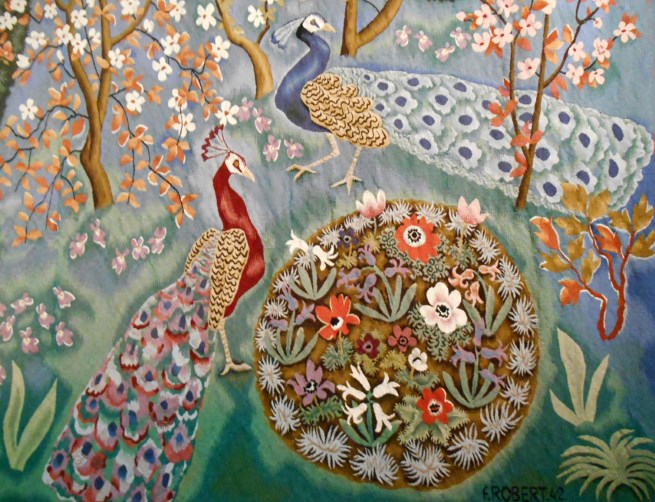
Epiphany at Palaja
Born into old aristocracy (the new was created by Napoleon) in Nieul-l’Espoir, Vienne, Guy de Chaunac-Lanzac was educated at the Jesuit school in Poitiers. At a young age Guy was given notebooks and pencils by his father who told him to ‘draw everything, everything and every day’. In Paris as a young student at the Ecole des Arts Décoratifs, Guy’s coterie included Jean Cocteau – a friendship deepened by their attention to an inner life inspired by their association in Paris with the great Catholic philosopher Jacques Maritain and his wife Raïssa, the noted poet and mystic. The creative work of both de Chaunac and Cocteau would be marked by an intense interiority often glossed over by the critical art fraternity as well as the public at large.
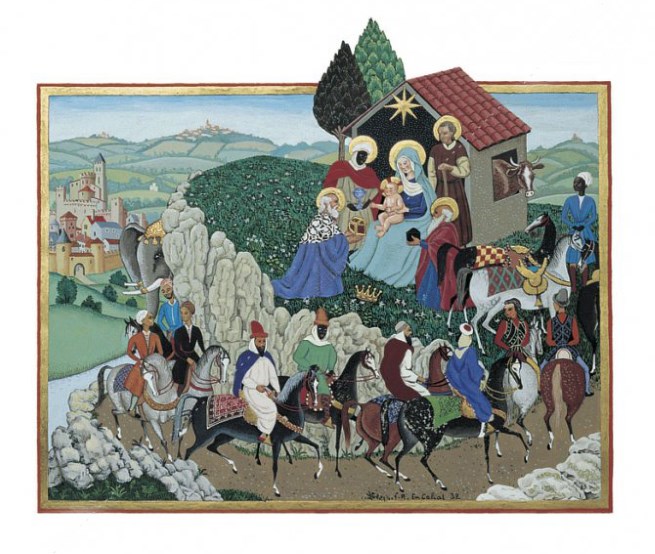
l’Adoration des Mages
De Chaunac’s early work was drawing and illumination and it caught the attention of the noted contemporary tapestry artist Jean Lurçat. Struck by the originality and power of the young de Chaunac’s watercolors and illuminations, Lurçat introduced the young artist to the techniques of tapestry. Jean Lurçat’s major work, The Apocalypse, wrenched from his searing experiences in the trenches of Verdun, is hung in a dedicated museum in Angers, on the opposite side of the river to the Chateau where now hang the colossal mediaeval tapestries of l’Apocalypse; tapestries that M. Lurçat re-discovered forgotten in a storeroom in 1938. Lurçat went on to re-define contemporary French tapestry, bringing back lost techniques such as battage and chiné.
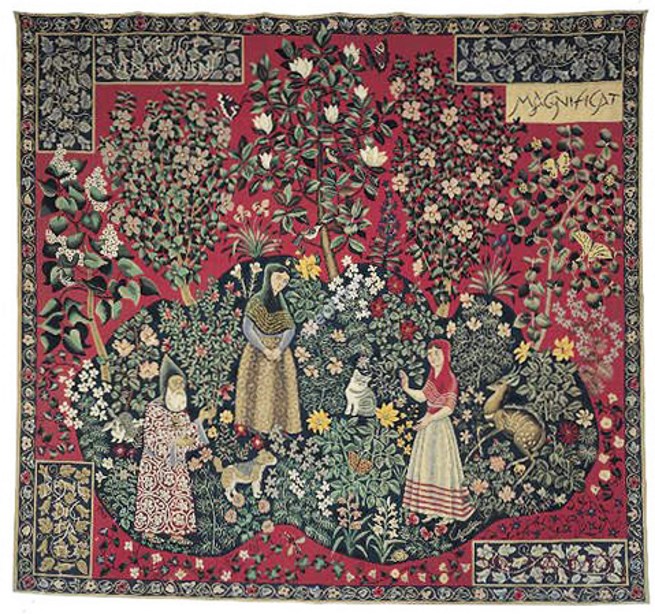
Magnificat
With Maxime Jacob, another member of the coterie surrounding the Maritains, Guy de Chaunac-Lanzac visited the Benedictine Abbey of En Calcat around 1930. The two men knew immediately they had found their spiritual home. From thenceforth they would dedicate their life within their monastery to their art form. Maxime Jacob became known to the world as the organist Dom Clément Jacob. Guy de Chaunac-Lanzac was no more – from now on the world will know him as Dom Robert. In 1937 he was ordained as a priest. The War broke into their peaceful life, and younger monks were not exempt from conscription. Dom Robert joined a reconnaissance group in Lorraine until 1940 when he was demobbed. He walked home. France was in ruins. He reached the outskirts of Carcassonne and saw the great fortified ramparts as the backdrop of his illumination l’Adoration des Mages. Walking from Carcassonne on the old country road from Palaja, heading for the Black Mountain, la Montaigne Noire, he passed a wall in which is a door. He heard a strange cry, pushed open the door and was confounded in that truly biblical sense by the scene of unutterable beauty in front of him. After the ugliness of war the perfect scene he beheld of flowers and birds and farmyard creatures, a cat sunning herself on the wall, peacocks calling in delight of their glory, was his coup de foudre, his epiphany into the world of Nature.
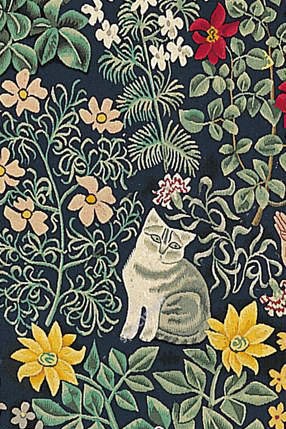
Magnifi Cat
This world of Nature increasingly became his subject matter. After the grand tapestries of the Magnificat in which Elisabeth’s cat is turning to welcome Mary who is dressed as a peasant girl, and Zacharias with his rabbit and little dog; The Creation of Man in which God, wearing carpet slippers and the blue apron of the Benedictines, is throwing a lump of clay at Man’s armpit before animating him. The heavenly tapestry of Mary as Queen Creatrix commissioned by the French government for Notre-Dame de France in Leicester square was the last in which Dom Robert would depict a human form. Nature, he was to say, is the True Reality; Nature never deceives; Nature is the Face of God. His long friendship with Jean Cocteau resulted in London’s best kept secret – Jean Cocteau painted the frescos of Notre-Dame de France, right there in Leicester square.
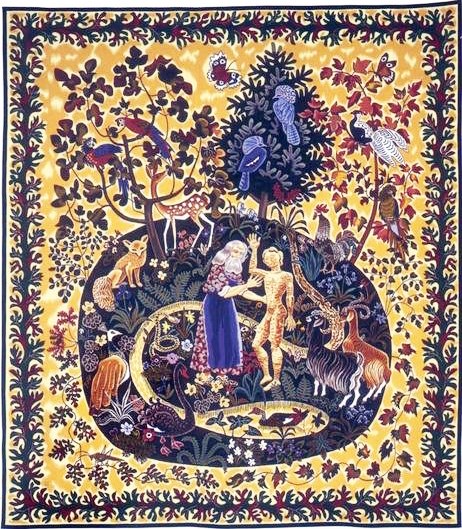
Le Création
There is a love story, of course. We are, after all, speaking of France, of Art, of Genius. It is not the love story of the quotidian. Suzanne Goubely owned the atelier at Aubusson where so many of Dom Robert’s works were woven. She was born in 1907, the same year as Dom Robert; she died in 1997 the same year as Dom Robert. She understood the demands of his work, his demand for perfection and the demands of the finest details of colour and nuance, silk and wool. When she died she bequeathed a considerable sum of money to build a museum to house the works that she helped to birth into the world. The Musée Dom Robert was opened in April 2015.
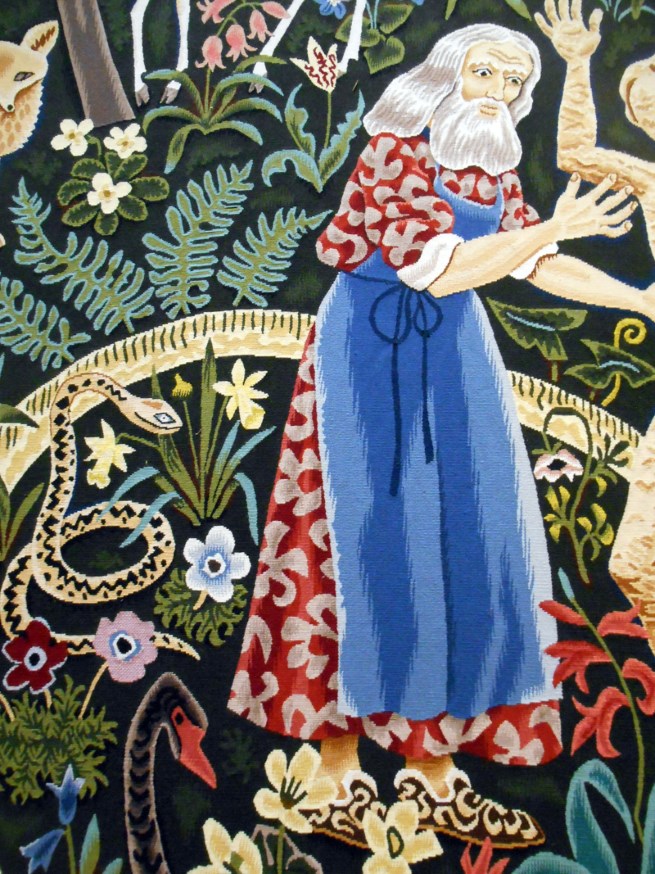
God in his carpect slippers, creating Man
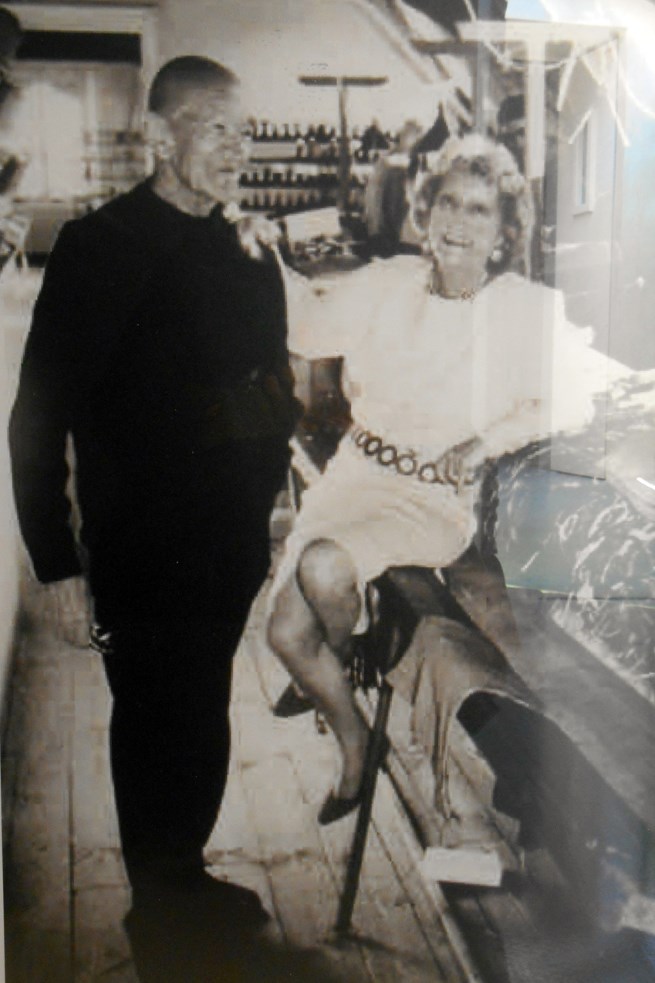
In their eighties, Dom Robert, Suzanne Goubely
Timing is everything. In March I made contact with Sophie Guérin-Gasc, whose life’s passion is to preserve the collections of two of the finest artists in France: her father Henri Guerin, and Dom Robert. She would be visiting the Museum from Toulouse on Tuesday; the Museum would be closed that day but she would be happy to make an appointment with me if I would like a private viewing. I made travel arrangements, flying in to Toulouse, hiring a car, driving to Dourgne, staying in the monastery in which Dom Robert lived his whole adult life. Blessing flowed on blessing. It was there I met a Sister from the neighbouring convent during my stay. Her interest in my name triggered an entire genealogy of my forebears and French provenance which, until then, I had known little. Out of my passion for Dom Robert’s work, out of my divine Obedience to follow my heart, would shortly come my pilgrimage to le village de Vismes, my poignant discovery of the Somme and my imminent exit from Brexit. All this from a few postcards bought a quarter of a century ago!
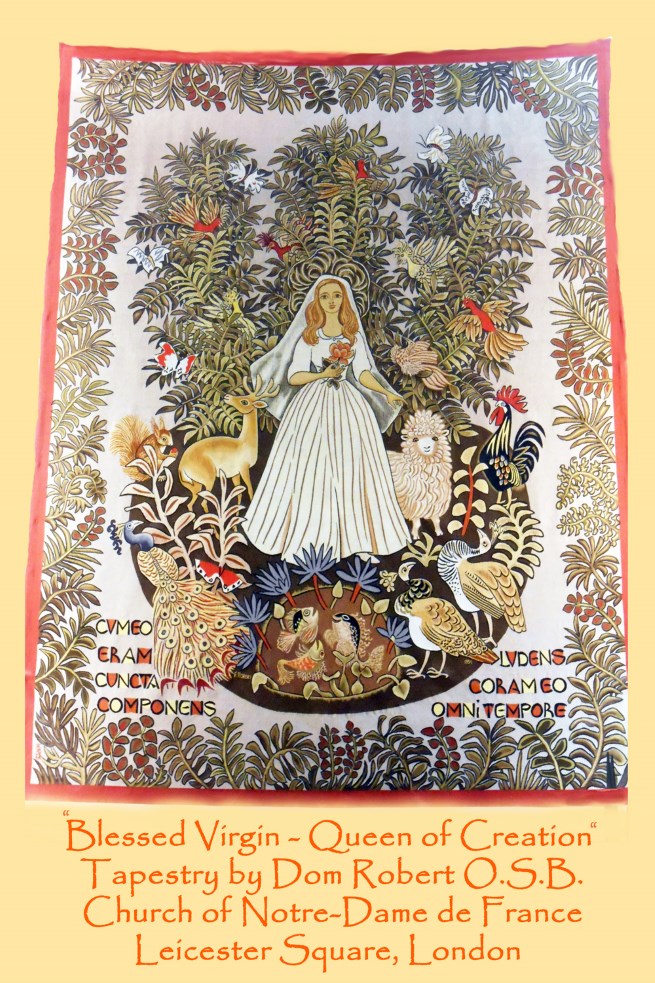
Queen Creatrix – Notre Dame de France, London
I cannot urge you enough to visit this secret part of France down there in the Tarn. You can stay in the magnificent old Abbaye, founded in 754 A.D., and spend long hours visiting the splendid Musée Dom Robert which is set within its courtyard.
- Suzanne Goubely
- Jean Cocteau painting N-D de France, Londres
- Mary at the Cross Jean Cocteau, N-D de France, Londres
- Altar Piece at Massaguel – Wellspring of Life
- Boute en Train Face
- Boute en Train
Next time I will take you on another journey through secret France, a France far away from any tourist trail yet just a hand span from wherever you might be. We will journey back in time to the medieval Black Virgins at whose shrines Kings and Queens were brought to their knees.
Share to: Facebook Twitter LinkedIn Email
Leave a reply
Your email address will not be published. Required fields are marked *





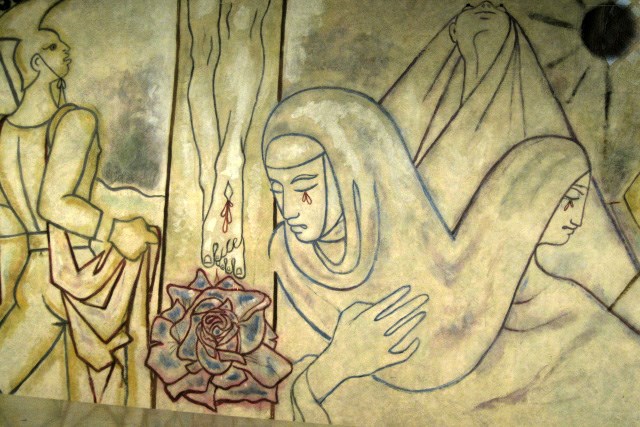
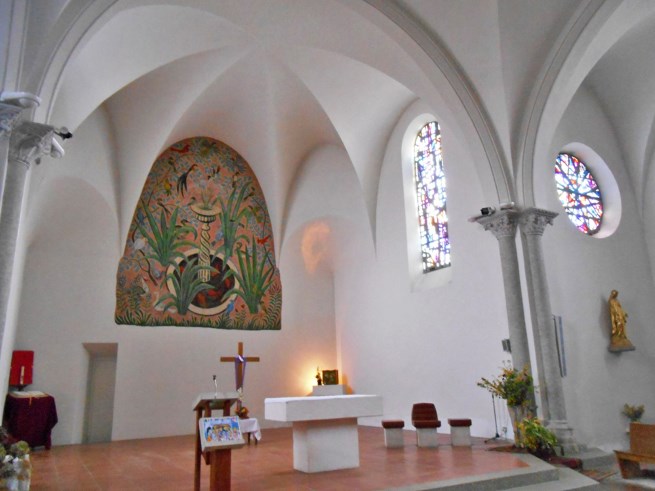
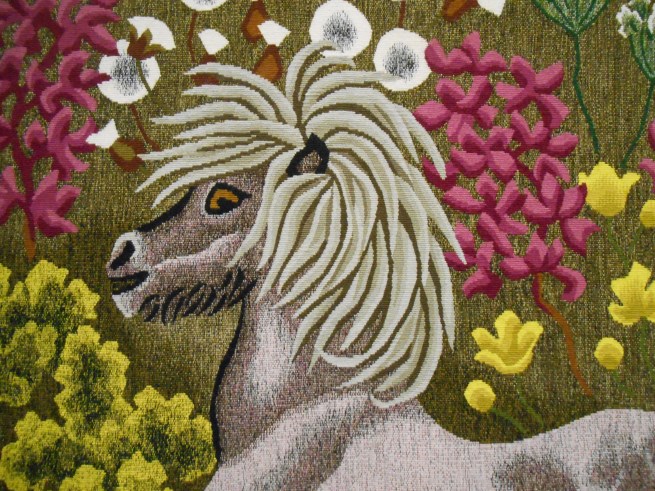
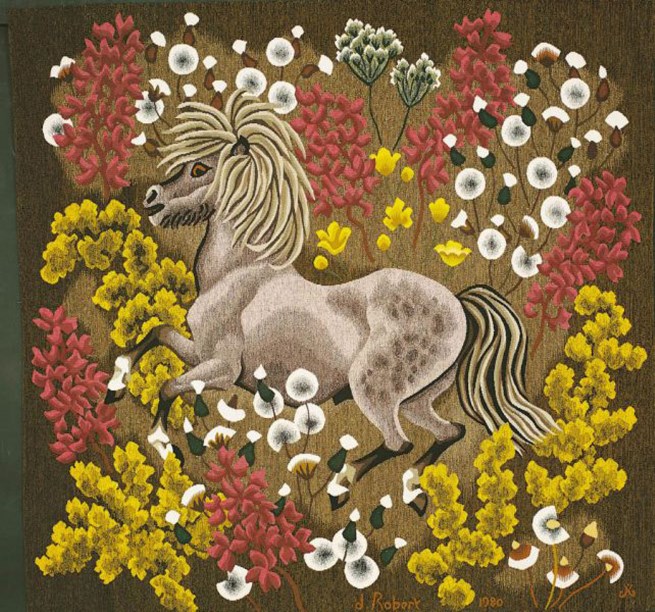



REPLY
REPLY
REPLY
REPLY
REPLY
REPLY